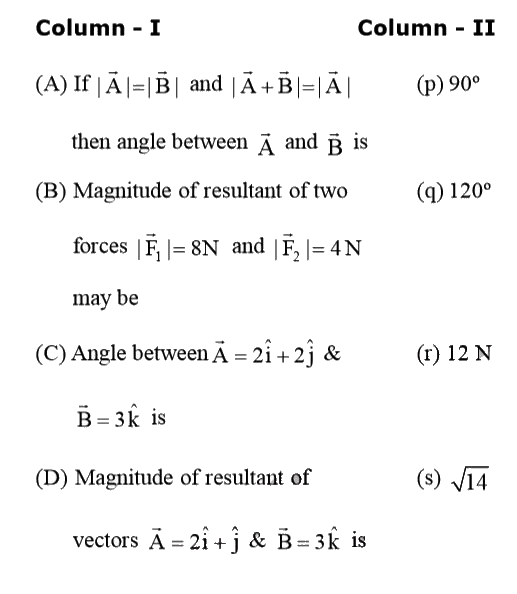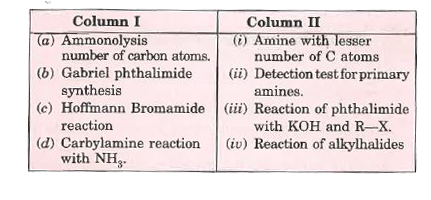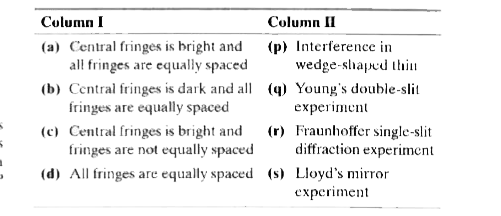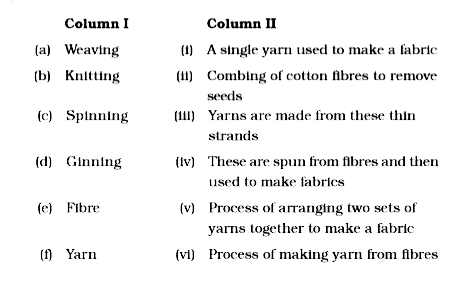Match the statement given in Column I. with the phenomenon given in column II.
The correct Answer is:(a)-(iii), (b)-(iv), (c )-(ii); (d)-(i)
Topper's Solved these Questions
- SURFACE CHEMISTRY BOOK - DINESH PUBLICATIONCHAPTER - SURFACE CHEMISTRY EXERCISE - ASSERTION-REASON TYPE QUESTIONS
5 Videos
- SURFACE CHEMISTRY BOOK - DINESH PUBLICATIONCHAPTER - SURFACE CHEMISTRY EXERCISE - SHORT ASNWER TYPE QUESTIONS
28 Videos
- SURFACE CHEMISTRY BOOK - DINESH PUBLICATIONCHAPTER - SURFACE CHEMISTRY EXERCISE - N.C.E.R.T. EXERCISE
1 Videos
- SOME BASIC CONCEPTS OF CHEMISTRYBOOK - DINESH PUBLICATIONCHAPTER - SOME BASIC CONCEPTS OF CHEMISTRYEXERCISE - ULTIMATE PREPARATORY PACKAGE
20 Videos
- THE CARBON FAMILYBOOK - DINESH PUBLICATIONCHAPTER - THE CARBON FAMILYEXERCISE - Ultimate
11 Videos
Similar Questions
Match the statements given in column-I with statements given in column-II

View SolutionMatch the reactions given in Column I with the statements given in Column II

View SolutionMatch the reactions given in Column I with the statements given in Column II

View SolutionMatch the reactions given in Column I with the statements given in Column II.

View SolutionMatch the reactions given in Column I with the statements given in Column II

View SolutionMatch the reactions given in Column I with the statements given in Column II

View SolutionMatch the statements in Column I labeled as (a), (b), (c), and (d) with those in Column II labeled as (p), (q). (c), and (s). Any given statement in Column I can have correct matching with one or more statements in Column II.
Match the observation given in Column I with the experiments given in Column II.

View SolutionMatch the statements given in Column I with the oxidation states given in Column II.

View SolutionMatch the statements given in Column I with the oxidation states given in Column II.

View SolutionMatch the terms given in Column I with the statements given in Column II

View Solution
